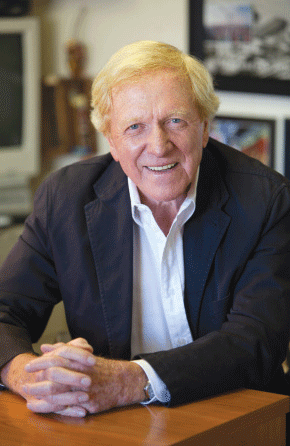WITH ASSETS OF $1.1 billion, Marin Community Foundation (MCF) is the ninth largest of America’s 750 community foundations. Most MCF assets come from the Buck Trust of 1975, although numerous Marin residents and businesses also donate to the fund committed to benefi ting “the people of Marin County.” Each year, MCF distributes nearly $60 million to organizations working with Marin’s less fortunate and other county causes.
We’re indeed blessed to have MCF in our midst. Recently, however, many have criticized a 74-page MCF report titled “A Portrait of Marin.” Dick Spotswood, a political columnist for the Marin Independent Journal, labeled it “a tool toward remaking the very nature of Marin.” And while a few MCF loyalists defended the report, others called it “an insult to our collective intelligence,” “social engineering” and “a propaganda piece with a predetermined agenda.” (To view the report, go to marincf.org/portraitofmarin.)
Dr. Tom Peters, MCF’s president and CEO, acknowledged to me that the report — which took four months to complete for an undisclosed fee — contains no original research but rather is primarily an analysis of U.S. Census Bureau statistics from 2005 through 2009.
The report says that in one area of Tiburon “median income is $81,000,” while in San Rafael’s predominately Hispanic Canal community, “it’s about $21,000.” Life expectancy in Ross is 88 years, the report points out, while in Marin City it’s 77 years. Interesting insights, yet hardly earth-shattering discoveries. Aside from that, “Portrait of Marin” doesn’t really portray who we are as a community.
What the report does do, according to Peters, “is clarify how many in Marin continue to struggle with life’s basic challenges— health, education and income.” What “A Portrait of Marin” caused me to do is think about all the county is already doing for its less fortunate. Here are just a few examples:
Bridge the Gap, a nonprofi t that helps children succeed in learning, has been operating in Marin City for more than 15 years and recently moved to larger quarters. “We now have 120 volunteers helping 350 youngsters,” says Bob Hunter, a San Anselmo investment adviser who cofounded the program.
Also in Marin City, Tiburon’s Patrick Tenney recently helped expand Aim High, a rigorous educational experience for low-income youth. “It’s not a handout,” he explains, “it’s a hand up.” Aim High is located in the $10 million Martin Luther King Jr. Academy, which the Sausalito School District recently built to serve that community’s seventh and eighth graders.
In the Canal community, Pickleweed Park and Center is an $8.5 million gathering spot built by San Rafael taxpayers, along with private donors including MCF, featuring a 6,000-volume library, 16 computer stations, an art room, a teen center and a gymnasium that still smells new. Nearby is the modernistic 74,000-square-foot Marin Health and Wellness Campus, which the county’s taxpayers built with its $72 million share of tobacco settlement funds.
Also, St. Vincent de Paul’s dining room serves 350 free meals every weekday, the Marin Food Bank distributes more than 80 tons of food every month, Homeward Bound houses 200 families every year, and Marin Community Clinics carries a caseload of 25,000 underserved patients at its three countywide locations. I could go on, but you get the point. If anything, Marin County has often been criticized for having too many nonprofits.
At last month’s release of “A Portrait of Marin,” attended by 250 involved citizens, MCF’s Peters stated, “Our goal is a Marin known for its equity, as well as its prosperity.” No question, more can be done. Yet today’s Marin already deserves to be known for its equity. Marin is a very giving community.
That’s my point of view. What’s yours? Email [email protected].


